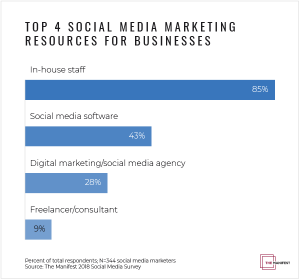— October 31, 2018
As we move ever closer to the Christmas season, now is a good time to reflect on the previous year and take stock of what 2018 has meant for retail businesses. There have been some seismic shifts in the makeup of the UK high street. A large number of well established, household names have had to either radically downsize their operations or pull the shutters down for the very last time.
The big names that have seen the chopping block so far this year include Toys R Us, Homebase, Maplin, Mothercare, and that barely scratches the surface of the broader picture. This looks concerning for anyone working in the retail space, and steps need be taken if you want to ensure that you are only just getting by from month-to-month next year but are also bringing in healthy profits.
It’s not all doom and gloom for independent retailers though, as we look at what the coming year presents in terms of opportunities.
The Changing Environment
With large retailers like Mothercare leaving our high streets for good, we have to ask ourselves what has happened to cause such well-established businesses to feel the pinch; to answer that, you simply need to have a look at the internet and the massive growth online retailers have experienced in the last few years. Amazon alone has had a massive impact on the profitability of retailers, and customers are choosing to go online to shop over heading out to a physical location.
The changing conditions have led to many retail units in city centre areas emptying out as we question what the modern customer looks for when they head into town for a shopping trip.
A New Proposition
Despite what we have seen over 2018, the future is looking bright for smaller, independent retailers. A look at the data from last year showed a sharp rise in the number of independent retailers and positive growth within the sector. You can argue that this boost has been encouraged by more people choosing to become self-employed in the wake of a sluggish job market that doesn’t offer the best of prospects.
It is arguable that budding entrepreneurs have more resources available to them now than ever before. The proliferation of technology has allowed a higher number of people to take the plunge and have a go at starting their own business.
Part of the Community
Where we can see small businesses being able to outmanoeuvre their larger, corporate rivals relates to how they are viewed within the communities in which they operate. Engaging with local charitable causes and establishing yourself as being committed to what is going on in the area in which you work. This all goes into capturing the loyalty of your customers that is so vital for both growth and survival.
The Pareto Principles states that 80% of the sales from a business come from 20% of their loyal customers. This demonstrates the value to any company of getting that level of repeat business engaged from a group of dedicated customers. Herein lies the key to survival for Britain’s independent retailers for the coming year. Keep your customers loyal, and they will keep coming to you.
Creating Customer Loyalty
Implementing a customer loyalty strategy is vital for any business to not only survive but prosper. Customer loyalty programs work to keep customers engaged and encourage repeat purchases through a variety of offers, sales and referral programs. One of the best ways to start a customer loyalty program is to collect customer emails and implement an email marketing program. The best email marketing strategies don’t simply use email for promotion, but also offer industry-related tips and tricks so the recipient feels they are getting value from your business’s emails. Other popular loyalty program strategies involve offering points for every purchase made which can then be converted into coupons or free home delivery.
Business & Finance Articles on Business 2 Community
(39)




